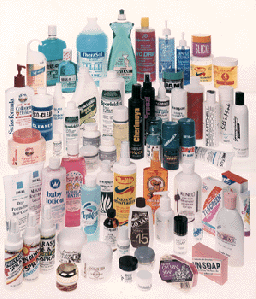Biological Products:
Bioaugmentation products for Wastewater applications in Papermills, Refineries, Chemical, Tanneries, Municipalities, Textiles, Steel, Agriculture, Animal feedlot, Gun Powder plant, Food and Beverage- Dairy Products, Orange Juice factory, Wineries, Cookie factory, Vegetable processing plant, Meat packing, Barbecue Restaurant, Aquaculture, Ornamental Ponds for algae control, CAFO, Nursing homes, Military, Campgrounds, Universities, Regulatory agencies
Lab Services:
Filamentous Identification Lab Service. One reason to identify filaments is to determine the filaments characteristics and then determine the type present. If the type is found out, a root cause can usually be associated with a particular filament. If the cause is known, then a correction can be made to alleviate problems. Chlorination is only a quick fix. Without process changes, filaments will grow back after chlorination. Wastewater Biomass Analyses and Cooling Tower Analyses also available
Audits and Consulting:
At Environmental Leverage® Inc., we have a team of experienced individuals who come into your plant with a fresh pair of eyes. The system is checked from influent to effluent. System optimization, equipment efficiency and operational excellence are key components explored. Key Benefits Equipment efficiency Total Cost of Operation reductions Reliability and safety An onsite audit is conducted to examine system parameters, process controls, and current monitor and control procedures. A physical walk-through is conducted, process flow diagrams are examined, previous design criteria are examined and current standard operating procedures are evaluated along with data logs.
|
Industry Troubleshooting-Amines and BiocidesLatest News!
What's New!
We have just added "Virtual Audits" to our capabilities. Check out our new Services. We are in the process of developing new courses for our ""Online E-University" in order to meet the needs of our global customers that cannot travel to our public classes.Visit our new website www.WastewaterElearning.com/Elearning
Nitrification -Amines and Biocides-Problems with Ammonia in Wastewater Treatment Plants !
Many municipal plants often times have problems with ammonia reduction and nitrification. Some times this can be due to solids handling reduction and the recycle of ammonia in the returning supernatant. Many plants used digestors to reduce the amount of solids they need to process. What they often do though is to return the supernatant to the front of the plant and thereby increase the ammonia loading. This continually recycles the ammonia in the system, and in the long run can sometimes cost more in electrical power to generate oxygen. Check out our training materials on solids handling, Total Nitrification Balance and ammonia problems. While this can be one cause of ammonia problems in a system, this newsletter is going to address another issue that is most often overlooked, Amines that may be present in the influent.
Industrial plants such as chemical or refineries usually make it a standard practice to measuring amines present in the influent. They take these into account when performing a total nitrogen balance across a system in order to completely assess the efficiency of their nitrification removal process. Municipalities are not used to measuring amines or organic nitrogen. It is often overlooked and can sometimes be a contributing factor to problems with nitrification and violations of final effluent permits.
Well, where would these amines come from?
| ||||||||||||||||||||||||
| Fabric softeners, conditioners | ADMA® tertiary amines | |||
Detergents |
Ampholak Armeen Armosoft Aromox Arquad Ethomeen Kortacid Nouracid |
Amphoterics Fatty amines Quaternary Ammonium salts and esterquats Amine oxides Quaternary Ammonium salts and esterquats Ethoxylated amines Fatty acids Fatty acids |
||
Hard Surface Cleaning (Industrial Cleaning and Institutional Cleaning) |
Berol Ethomeen Aromox Elfan Arquad Nouracid Kortacid |
Nonionics Ethoxylated amines Amine Oxides Anionic Quat. Ammonium salts Fatty acids Fatty acids |
||
Personal Care |
Arquad Armocare Ethomeen Ethoduomeen Elfacos Elfan AT Ampholak Aromox Amadol |
Quaternary ammonium compounds and esterquats Quaternary ammonium compounds and esterquats Ethoxylated amines Ethoxylated diamines Specialty polymers Cocoyl isethionate Amphoteric Amine oxide Ethanolamide |
||
Personal care products, although used in small amounts in each household, can add up in large population areas.
Typical composition of a general-purpose cleaning agent can be provided from a Material Safety Data Sheet. Ask your customers to provide you with MSDS sheets for compounds that they might use in their facility.
Composition of Typical General Purpose Cleaning Agent

Tetrasodium ethylenediamine tetraacetate (chelating agent)
Alkyldimethylbenzyl ammonium chloride (hydrolysis catalyst)
Non-Ionic Surfactant (emulsifier)
d-Limonene (a hydrocarbon fragrance)
Non-volatile substances (8 percent - unspecified)
Water
Cleaning agents containing quaternary ammonium compounds such as alkylbenzyldimethyl ammonium chloride can be found in most grocery stores and supermarkets under a variety of brands. Some typical cleaning agents are listed below. (It should be noted that many detergents do not reveal their complete composition on the label.)
Typical Enzyme Detergents
Cleaning Agent pH Comments
Pearl Plus (Flexo) 10 Active ingredient alkyl dimethyl benzylammonium chloride.
Pine Scented 9 Corrosive to skin and eyes. Household Cleaner Use rubber gloves. Contains quaternary ammonium chlorides.
Lysol 8 Corrosive. Contains alkyl dimethylbenzyl ammonium chloride. Use rubber gloves.
Ok, I am convinced, I believe there may be amines in my influent, so what do I do about it?
The first thing you need to do if you are not already doing this is to check for the presence in your influent. The best way would be to check a composite sample (24-hour sample). This would make sure that you are catching any that might be present. In some plants, it might be that the only time they are present is for example at night when the restaurants close down and perform their routine clean up. It might be only in the morning when they start up, it might be when most households are home on the weekend and are doing clean-up around the house. At one plant, it might be that there is a small food or industrial plant and they are on a specific cleaning schedule bi-weekly. One way to find out is to ask all your industrial or restaurant customers. Talk to them and ask them if they recently changed cleaning compounds or what biocides and cleaners they use. Residential customer's usage will have to be judged by normal composite samples, since dilution factors will probably make their individual usage minimal as a contributing factor.
The best way to avoid missing the amount of amines present in your influent that might be causing you problems is to take a composite sample every day for a week or extended period. If you do not have a composite sampler onsite, you can try to use a small polymer pump, a small hose and a bucket and set the pump speed to collect a small sample periodically.
How do you measure amines?
The old standard way is a TKN procedure- total Kjedahl nitrogen. Samples are digested in sulfuric acid in the presence of a mercuric oxide catalyst. The Kjeldahl nitrogen present is converted to ammonium cation. Potassium sulfate helps speed the conversion to ammonium.

Total Kjeldahl Nitrogen (TKN)
a. TKN = ORG-N + NH3-N
b. Digest sample in sulfuric acid and catalyst Org-N NH4-N
c. Steam distillation to determine ammonia content Organic nitrogen (by difference)
ORG-N = TKN - NH3-N
TKN = ORG-N + NH3-N
There are now easier methods to measure Total Nitrogen- NH3, NO2 and NO3
A variety of test procedures and methods are now available for use by water and wastewater operators. They run
the gamut from colorimetric, titrimetric, electrometric (meter & probe), turbimetric and nephlometric through demonstrative methods.
 Colorimetric
test methods offer on-the-spot results and can test for a variety of
common substances.
Colorimetric
test methods offer on-the-spot results and can test for a variety of
common substances.
NH3, Nitrite and Nitrate nitrogen can easily be performed by Colorimetric procedure
Normally nitrate and nitrite are found in very low to minimal concentrations in the influent. They should be measured in the final effluent if nitrification is required at a wastewater treatment plant. An increase in nitrates across a system will be a good measure to determine if nitrification is occurring.
Total Nitrogen
Total Nitrogen- For practical purposes in wastewater analysis,
TN = ORG TN = ORG-N + NH3-N + NO2-N + NO3-N
TKN = OR TKN = ORG- N + NH3-N
TON = NO2TON = NO2-N + NO3-N
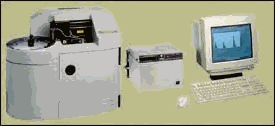 FormacsTN - Total Nitrogen Analyzer Skalar has a total
nitrogen analyzer, the FormacsTN Analyzer. Using a
combustive catalytic procedure at 850°C followed by chemiluminescence
detection, this analytical technology shows excellent correlation with
established methodology. This new method of analysis is rapidly becoming the
alternative for cumbersome reference methods, such as Total Kjeldahl
Nitrogen (TKN). With this simple procedure reliable results are now
available in minutes without any waste production for a wide range of
water/environmental samples.
FormacsTN - Total Nitrogen Analyzer Skalar has a total
nitrogen analyzer, the FormacsTN Analyzer. Using a
combustive catalytic procedure at 850°C followed by chemiluminescence
detection, this analytical technology shows excellent correlation with
established methodology. This new method of analysis is rapidly becoming the
alternative for cumbersome reference methods, such as Total Kjeldahl
Nitrogen (TKN). With this simple procedure reliable results are now
available in minutes without any waste production for a wide range of
water/environmental samples.
Hach Test N Tube reagents-Test ‘N Tube™ Analysis Products
Fast, Efficient, Analyses for wastewater parameters
Nitrogen, Total Reagent Set, Test 'N Tube, 50/tests Product #: 2672245
- Nitrogen, Total Reagent Set, (Test 'N Tube)
- Method: Persulfate Digestion
- Range: up to 25.0 mg/L
- 50/test
Phosphorus
1. Total Phosphorus
2. Reactive Phosphorus
3. Acid Hydrolyzable Phosphorus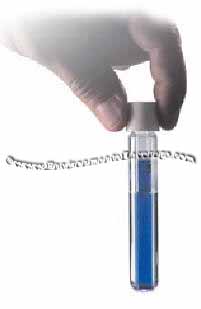
Nitrogen
1. Total Nitrogen
2. Total Inorganic Nitrogen
3. Ammonia
4. Nitrate
5. Nitrite
Efficient Testing Designed for maximum efficiency and minimal waste, Hach’s Test ‘N Tube™ Analysis Systems are the products of choice for wastewater treatment professionals all over the world. These innovative systems:
• Feature accurately premeasured reagents—already in the vial or available in sealed, unitdose packages
• Require minimal handling and less preparation time
• Are less dependent on individual technique, producing precise and repeatable results
• Minimize, and sometimes eliminate, the use of hazardous chemicals:
• No cadmium is used in the TNT Nitrate method
• No mercury is used in the TNT Ammonia method
• Reduce laboratory waste and associated disposal problems
Easy to Use 1. Simply add sample and reagents to the Test ‘N Tube™ vial and seal with the cap. 2. Digest up to 25 vials
simultaneously in Hach’s COD Reactor. 3. Read results directly on a Hach spectrophotometer or colorimeter.
4. Dispose of reacted samples in the sealed vials both easily
 CHEMets®
Colorimetric Test Kits
CHEMets®
Colorimetric Test Kits
Self-Filling Ampules Give Easy, Safe, Fast Analysis
No mixing, measuring, calibrating or cleaning, just snap the ampule,
containing pre-measured unit dose of reagent, into the sample. You'll get
quantitative results in minutes with ±4% accuracy.
Specifications: Accurately test water quality for the analytes
listed below. Compare with liquid color standards included with kit for
results. Each kit contains 30 individual tests, packaged in single-unit
dose, vacuum-sealed ampules, plus comparators, accessory solutions (when
necessary), snap cup and complete instructions.
VACUettes® Colorimetric Test Kits
Designed for Highly Concentrated Samples
Use a special auto-dilution feature that eliminates the need for a
time-consuming and error-prone prelimin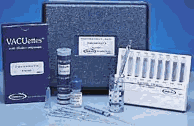 ary
dilution. So, the entire test takes only two to three minutes.
ary
dilution. So, the entire test takes only two to three minutes.
Specifications: Each 7mm ampule has a capillary pipet attached
to its tip. It is calibrated to draw the correct volume of sample for one of
four dilution factors: 25X, 50X, 100X and 1000X. Hold the ampule
horizontally so the capillary tip contacts the sample. After the pipette
fills, immerse in a diluent (usually tap water) and snap ampoule tip. The
sample and diluent are drawn into ampule where they are mixed with the
reagent. Resulting color change can then be compared with liquid color
standards to quantify results. Test Kits contain 30 ampules,
comparator(s), sample cup, accessory solution (when necessary) and
instructions. Refill Packs of 30 ampoules and accessory
solutions are also available. Comparators have a two-year shelf life.
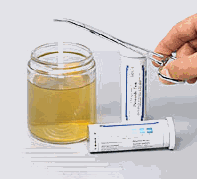 EMQUANT®
Test Strips
EMQUANT®
Test Strips
Identify and Detect Ions and Compounds in Seconds
A wide selection of strips allows rapid, easy analysis of a variety of technical processes and solutions.
Specifications: Simply match test color to chart on strip container--no technical background or special skills required. Some strips are supplied with companion reagents in convenient dispenser bottles.

Titrets® Titrimetric Test Kits
Use Reverse Titration to Quantify Concentrations
Each Titret cell is a 13mm-dia. ampoule for titrimetric analysis. The
hand-held ampoule contains vacuum sealed liquid titrant and has an attached
flexible valve assembly.
Specifications: Easy to use, the sample is drawn up into the
ampoule until a color change signals that the equivalence point has been
reached. Titration is stopped and the ampoule held upright. Its liquid level
will correspond to a scale marked in ppm on the ampoules' outer surface. Test
Kits contain 30 ampoules, 30 valve assemblies, a sample cup, accessory
solutions (when necessary) and instructions.
Conclusions:
It does not matter which method you use, the only thing that matters is when you use it, how often you use it and how consistent you use your test methods. Where you pull the samples from also impact the calculations and your final test results. Make sure that if you are testing influent samples, that you are measuring total influent to the plant, including supernatant from sludge dewatering units or digestors. If they have a different feed point, test these streams separately if necessary, but be sure to include the final measurements in your calculations. These side streams are often overlooked and can also be a contributor to ammonia problems.
Biomanagement Programs based on above all, a bioaugmentation program may be recommended depending on the need of the individual customer. The program may consists of the addition of biological products supported by ongoing site services and laboratory analysis for monitoring and documenting the progress of the application.
Nitrification Troubleshooting Newsletter
Denitrification -Gasification Newsletter
For additional information on our Biological products that can be used to help overcome Nitrification issues or to help the plant recover faster.
an Environmental Leverage™ product.
The Critical 5 plus one- Alkalinity is critical for nitrification
http://www.epa.gov/epaoswer/non-hw/recycle/jtr/comm/exchnat.htm
Pollution Prevention Opportunities
www.p2pays.org

